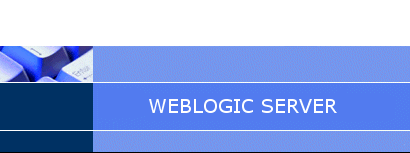What's New in Oracle WebLogic Server

New Features and Enhancements
- Java EE 8 Support
WebLogic Server is a fully compatible implementation of the Java Platform, Enterprise Edition (Java EE) Version 8.0.
- Runtime Improvements
WebLogic Server builds on support from prior WebLogic Server versions to improve the reliability, availability, scalability and performance of WebLogic Server applications in clustered environments, when using new Oracle database features, in multi data center architectures, and on Exalogic Systems.
- Manageability Improvements
WebLogic Server continues to provide new management features which simplify the configuration, monitoring and ongoing management of WebLogic Server domains and applications.
- Standards Support, Supported Configurations, and WebLogic Server Compatibility
WebLogic Server supports standards and version,configurations, licensing information,weblogic server compatibility and database interoperability.
- Removed and Deprecated Functionality
The following functionality has been deprecated: Log4j, the Maven 11x Plug-In, JSP Tags for XML Processing, Server Argument to WLST Diagnostics Commands, URL Format for REST Management, and more. The following functionality has been removed: Multitenancy Support, WebLogic full client, IIOP thin client jar files, and JMS adapter.
For more detailed information on new features and enhancements, see the What's New in Oracle WebLogic Server.
Support for Multiple Programming Models

- Java EE 8, including these APIs and features:
- JSON Binding 1.0
- Java EE Security API 1.0
- JSON Processing 1.1
- Servlet 4.0
- JavaServer Faces 2.3
- Bean Validation 2.0
- WebSocket 1.1
- Context and Dependency Injection (CDI) 2.0
- Java Persistence 2.2
- Java API for RESTful Web Services (JAX-RS) 2.1
- Common Annotations 1.3
- Interceptors 1.2
- JavaMail 1.6
- JAX-WS 2.3
- Spring
- Certified with Spring 5.x
- Spring Console Extension
- Exposure of JMS resources to Spring
- Injection of Transaction Manager and JMX MBeanServer references
See the What's New in Oracle WebLogic Server for more information.
|
Learn About WebLogic Server

Resources Available with your WebLogic Server Installation
- Administration Console
A Web browser-based, graphical user interface that you use to manage WebLogic Server. Use the username and password you entered when creating Weblogic samples domains
- Code Examples and Sample Applications
WebLogic Server provides a variety of code examples that show configuration and API use, including a set of Coherence examples. Code examples and sample
applications are not installed by default. You must perform a custom installation and select to install the Complete Installation.
- Fast Track Deployment and Administrator Guide
Learn how to quickly deploy Java Platform, Enterprise Edition (Java EE) applications and access system administration tools.
- Avitek Medical Records Sample Application
The Avitek Medical Records application is an educational tool for all levels of Java EE developers.
It showcases the use of each Java EE component, and illustrates best practice design patterns for component interaction and
client development. MedRec also illustrates best practices for developing and deploying applications with WebLogic Server.
Complete source code and documentation is available for this application.
To launch the Medical Records Application, first shut down the current
WebLogic Server instance using the Shut Down Server button
in the top right corner of this page. Then run
the startWebLogic
script from the MedRec domain root directory. By default, this is the ORACLE_HOME/user_projects/domains/medrec directory,
where ORACLE_HOME represents the directory you specified as the Oracle Home when you installed WebLogic Server; for example, C:\Oracle\Middleware\Oracle_Home.
- Avitek Medical Records Sample Application (Spring Version)
A Spring version of the Avitek Medical Records application is now available!
To launch the Spring version of the Medical Records Application, first shut down the current
WebLogic Server instance using the Shut Down Server button
in the top right corner of this page. Then run
the startWebLogic
script from the Medrec Spring domain root directory. By default, this is the ORACLE_HOME/user_projects/domains/medrec-spring directory.
Resources Available on the Internet
|


![]()